以下是几种水果和蔬菜在人们选择育种前后的样子
以下是几种水果和蔬菜在人们选择育种前后的样子
Lately, there’s been quite a big movement against genetically modified foods (GMOs). And while the process of genetically modifying certain food is rather recent, humans have been playing around with the genetics for centuries. The difference is that they did it by means that required much more time and patience. As far as human agriculture goes, everyone’s been trying to grow the bigger, better and more nutricious source of food and that’s how selective breeding allowed us to enjoy the fruits (literally) of a hundreds of years of labor.
最近,有一场反对转基因食品的大运动。虽然对某些食物进行基因改造的过程是最近才开始的,但人类对基因的研究已经有几个世纪的历史了。不同的是,他们做这件事需要更多的时间和耐心。就人类农业而言,每个人都在努力找到更大、更好、更营养的食物来源,这就是选择性育种让我们享受数百年劳动果实的原因。
Some fruits and vegetables featured here show a variety of plants that could be considered a great-great-great-great-grandpa of the modern day equivalent. While others, like the banana we know today, are relatively new to our cuisine.
这里的一些水果和蔬菜展示了各种各样的植物,这些植物可以被认为是现代意义上的曾祖父。而其他的,比如我们今天认识的香蕉,对我们的菜系来说是比较新的。
Wild watermelons
野生西瓜
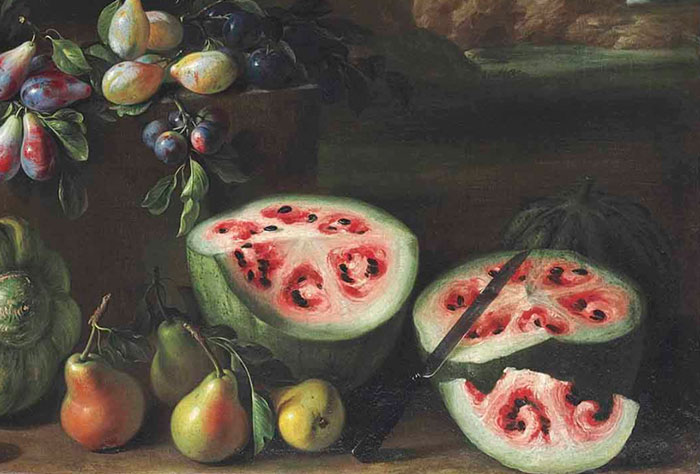
Image credits: christies
A crop of a 17th-century painting by Giovanni Stanchi shows watermelons in a completely different form than we’re familiar with. The artwork which was painted between 1645 and 1672, depicts watermelons haing swirly shapes embedded in six triangular pie-shaped pieces, as well as large seeds and the inside that is dominated by the white flesh that most of us consider inedible nowadays.
乔瓦尼·斯坦奇在17世纪的一幅油画中展示的西瓜形状与我们所熟悉的完全不同。这幅创作于1645年至1672年间的作品描绘了西瓜的形状,西瓜呈漩涡状嵌在6个三角形的饼状瓜块中,瓜子很大,里面的果肉是白色的,我们大多数人现在都认为是不能吃的。
Modern watermelons
现代的西瓜
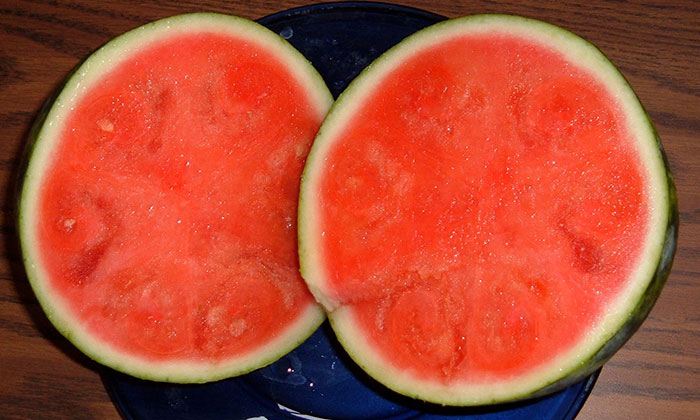
Image credits: Scott Ehardt
Over time, humans bred watermelons to be much more appealing and mouth-watering. Nowadays, we can easily get watermelons that are perfectly ripe, bright red and juicy and there are even varieties that are seedless. Those are produced by crossing diploid and tetraploid lines of watermelon, with the resulting seeds producing sterile triploid plants.
随着时间的推移,人类培育出了更有吸引力、更令人垂涎的西瓜。如今,我们很容易就能买到熟透的西瓜,鲜红多汁,甚至还有无籽西瓜。它们是由西瓜的二倍体和四倍体杂交产生的,由此产生的种子产生不育的三倍体植株。
Wild banana
野生香蕉
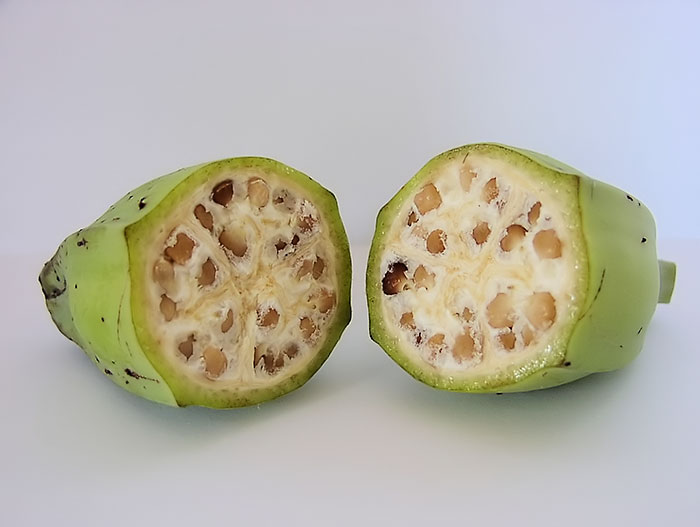
Image credits: geneticliteracyproject
Banana’s ancestors date back as far as 10,000 to 6,500 BP as researches found numerous phytoliths of bananas at the Kuk Swamp archaeological site. But before banana was what it is today, a creamy, sweet fruit (well, technically a berry), it went through a lot of changes through selective breeding. One of the biggest differences in the wild variety of the fruit is large seeds that take up most of the fruit. Quite difficult to imagine eating that, right?
研究人员在库克沼泽考古遗址发现了大量的香蕉植物岩,香蕉的祖先可以追溯到10000到6500个BP。但在香蕉成为今天的样子之前,它是一种柔滑、香甜的水果(确切地说,是一种浆果),它通过选择性育种经历了很多变化。在野生品种的果实最大的区别之一是大的种子,占据了大部分的果实。很难想象吃那个,对吧?
Modern banana
现代的香蕉
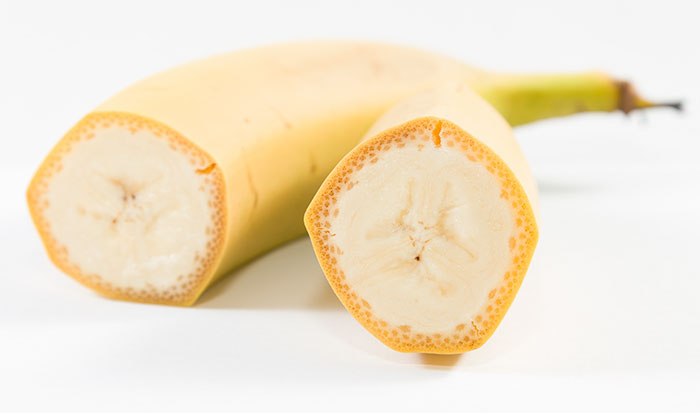
Image credits: Christian Dembowski
The fruit that we now call banana has one of the most tumultuous histories ever. The mass production of bananas started only in 1834 when the fruit was moved to the Caribbean. However, at the beginning of the previous century the massively produced bananas were struck by a crisis, a fungus infection that started wiping out entire plantations. That’s when researchers developed a banana that was able to withstand the fungus infection, the Giant Cavendish, which is what we currently know as bananas.
我们现在称之为香蕉的水果有着最混乱的历史。香蕉的大规模生产始于1834年,当时香蕉被运到了加勒比海。然而,在上个世纪初,大量生产的香蕉遭遇了一场危机,真菌感染开始摧毁整个种植园。就在那时,研究人员研制出了一种能够抵御真菌感染的香蕉——巨型卡文迪什香蕉,也就是我们现在所知的香蕉。
Wild eggplant
野生茄子
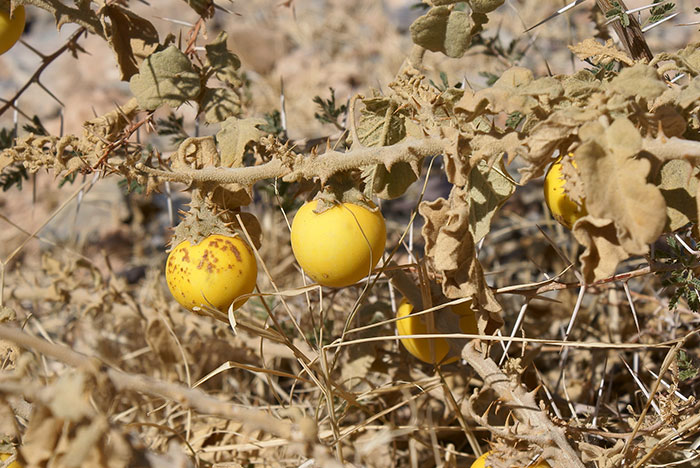
Image credits: Nepenthes
Throughout history, eggplants had a variety of shapes and sizes before appearing on our dinner tables as round, fleshy vegetables. Some of the earliest versions of eggplant were recorded in ancient China. The first generations of plants used to have spines on the place where the plant’s stem connects to the flowers, which quite an extreme look, when you think of it. As bad-ass as the wild eggplant might look it also lacks the size and other preferable qualities of the modern day equivalent.
纵观历史,茄子有各种各样的形状和大小,然后才出现在我们的餐桌上,成为圆形的肉质蔬菜。一些最早的茄子版本记录在古代中国。第一代植物的茎与花相连的地方有刺,当你想到这一点时,你会觉得这是一种很极端的样子。虽然野生茄子看起来很丑,但它也没有现代茄子的大小和其他优点。
Modern eggplant
现代的茄子
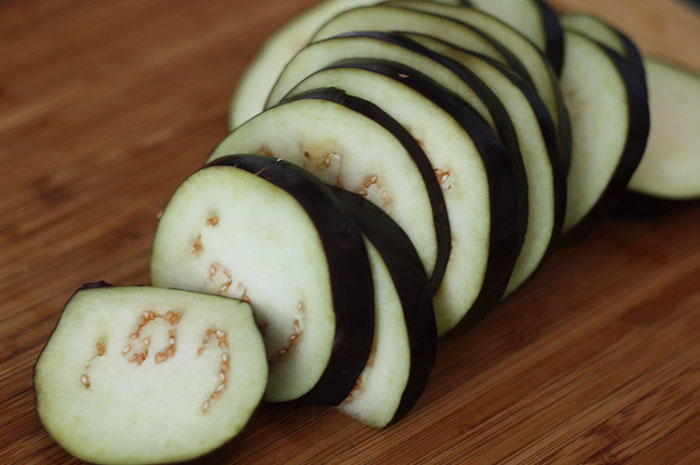
Image credits: lchunt
The modern day eggplant is big, long and meaty (haha!). With the limited number of seeds and plenty of flesh, the eggplant shows just how wonderful selective breeding can be!
现代茄子又大又长又肉(哈哈!)由于种子数量有限,果肉丰富,茄子的选择育种是多么美妙!
- 频道推荐
- |
- 全站推荐
- 推荐下载
- 网站推荐


















